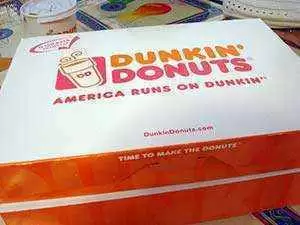Celiac.com 03/13/2014 - Two recent articles in Bloomberg Businessweek offer some excellent lessons for companies seeking to introducing gluten-free products at the retail level. Both articles are by associate Bloomberg Businessweek editor Venessa Wong.
 The first article is titled Open Original Shared Link The article describes the gluten-free missteps of a few companies that got their gluten-free efforts wrong, at least at first.
The first article is titled Open Original Shared Link The article describes the gluten-free missteps of a few companies that got their gluten-free efforts wrong, at least at first.
Celiac.com Sponsor (A12):
Companies mentioned in the article include California Pizza Kitchen, which rolled out pizzas made with a gluten-free crust late in 2010.
Many customers became angry when they realized gluten was present in other parts of the pizza, and that the pizzas, as eaten, were not gluten-free. After about six months of the uproar, California Pizza Kitchen quickly pulled the pizzas off the menu, and then spent more than a year working to revamp its kitchen operations and train employees.
Domino's pizza recently took a similar approach by rolling out a highly touted, much marketed gluten-free pizza crust, when their final product was not gluten-free. In fact,
When many people within the gluten-free community expressed outrage over what they claimed was misleading at least, and possibly a classic bait-and-switch, Domino's tried to quell the the uproar by claiming that they never intended their pizzas to be for people with celiac disease or serious gluten-sensitivity. Those disclaimers did not go over well.
It is important to remember that the latest ruling by the FDA requires restaurants to use the term "gluten-free" in the same way as commercial food producers. That is, they can only use the term gluten-free if the product contains no gluten ingredients and tests below 20 parts per million.
The second article is titled Open Original Shared Link Ostensibly an article about why Dunkin' Donuts has taken its time in bringing gluten-free donuts to its customers, works as a loose guide for companies looking to get it right. In the end, Dunin' Donuts decided not to go to market with a gluten-free product at this time.
Companies that successfully introduce gluten-free products at the retail level strictly control and monitor every step of the gluten-free process, from supply to production to preparation and final delivery to the customer. These companies also invest in training their workers at all level of the process to achieve uniform results.
Companies that approach gluten-free food as a medical issue, and which set their sights on offering celiac-friendly gluten-free food, seem to do best in the long run.
Companies that have difficulty in introducing gluten-free products at the retail level either fail to strictly control and monitor every step of the gluten-free process, or they do not design such a comprehensive process in the first place. Many failed efforts involve companies offering products that incorporate gluten-free ingredients, such as Domino's gluten-free pizza crust, but which are not part of a truly gluten-free final product.
Companies that approach gluten-free food as a trendy issue, and tout food with gluten-free ingredients, but which can harm people with celiac disease seem to run into troubles.
So what do you think? Can you name some other bad rollouts of "gluten-free" products?






Recommended Comments